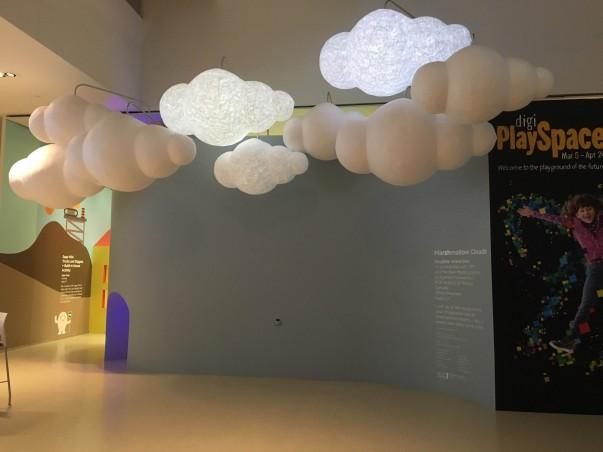By Jaclyn Tansil
Students from Ryerson University have helped create installations with artists from around the world for the second year in a row, at Toronto International Film Festival’s (TIFF) digiPlaySpace.
DigiPlaySpace, which runs from March 5 to April 24, is a technology-meets-art exhibition and digital playground that allows children and families to learn while playing with interactive installations. Nick Pagee, the curator of digiPlaySpace and a former graduate of Ryerson University, has been working on the exhibition with TIFF for five years.
“Here we celebrate the huge range in diversity of new media forms, and this year we have definitely gone bigger and better than ever, we have 25 installations from nine different countries.” Pagee said.
For this year’s exhibition, Ryerson’s new media and master of digital media students worked on three installations, one of them being the opening wall of the exhibit, Marshmallow Clouds.
Alex Beim and Andrea Buttarini from Tangible Interaction were the ones to decide on using clouds as their design. They worked in partnership with new media students to create the opening exhibit to year’s digiPlaySpace. It resulted in over 300 hours of construction and installation.
The exhibit is made up of “nine inflatable clouds that are illuminated from within and [that] change colour in response to presence of audience moving within and around the installation space,” said Steve Daniels, the director of the New Media Program and the project lead for Marshmallow Clouds.
“We mostly did the interior design [of the clouds], we fabricated all of the fans, and the sensors and we put them all together and then spent another 16-hour day with Tangible Interaction, setting the whole thing up,” said Maisey Sutherland, one of the 12 new media students that contributed to this project.
Three new media students, Meera Balendran, Alexander Basso and Tess Sutherland assembled The Toothbrush Machine, designed by Swedish artist Simone Giertz. The piece is made out of a skateboard helmet attached with a robot arm and a toothbrush.
“We needed 10-15 hours to assemble the piece, it was pretty much just follow the instructions to put it together,” said Basso.
The Augmented Reality Sandbox is made up of 1,500 pounds of kinetic sand which appears to look and feel like wet sand. This exhibit is for kids to create a topographic environment with the sand. Ryerson’s Master of Digital Media Program provided technical support for this piece.
Some of the other installations include stop motion animation, interactive projection, robotics and LED electronic art.











Leave a Reply